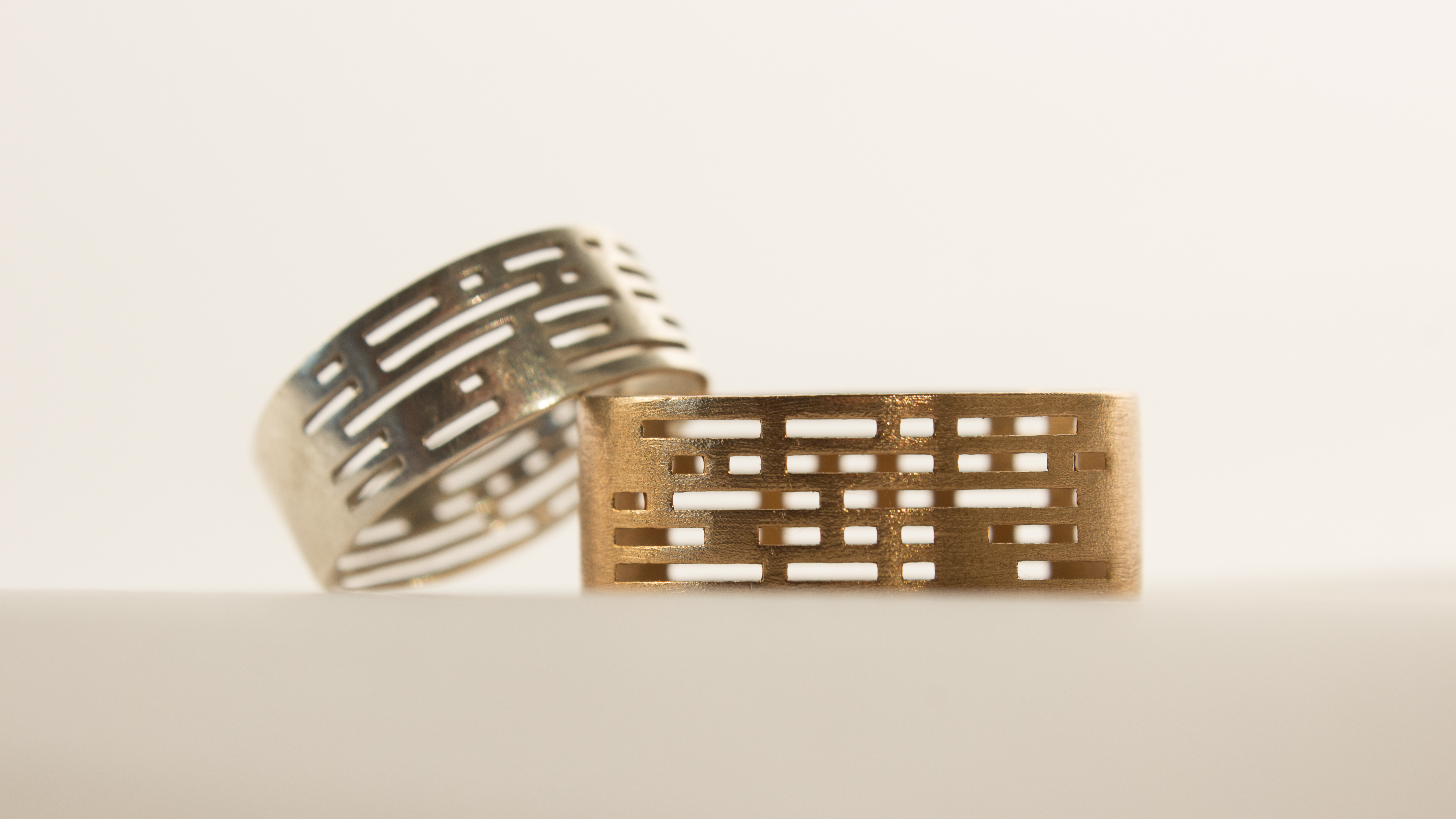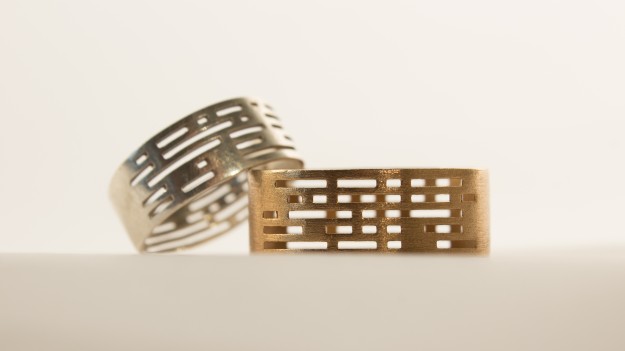
Jussi Ängeslevä is the creator of Ciphering, which is part of a research project project of Berlin University of the Arts and the Technical University Berlin, which is using scientific methods to explore the role of rapid manufacturing, like 3D printing, in product creation. The ring uses the Shapeways API to create beautiful rings with hidden number messages that you can see when you take the ring off your finger and shine a light through it. As the Ciphering is part of the research process its only available for a short time – until December 31, 2014.
 Introduce yourself. What is your background and what inspired you to create Ciphering?
Introduce yourself. What is your background and what inspired you to create Ciphering?
I’m an interaction designer juggling my time between academia and industry, creating experiences in fantastically different scales. My role as Vice Creative Director at Design Studio ART+COM keeps me busy with creating larger public space experiences, ranging from museums to public art commissions. In parallel, as a professor at the Berlin University of the Arts, we are looking at the impact of digital technologies and “computational thinking” in everyday life. In both contexts, the meaning of interactivity, code and digital is increasingly shifting to physical world, where creating experiences with mechatronics, robots doing things designed by some complex algorithm, or where the physical form and the digital behavior cannot be separated anymore, as the programming takes place in both.
“Ciphering” is a generative jewelry, where the customer can encode 4 digits to the physical structure of the ring, which can be decoded when shining light through it, or when aligning the ring just right, and looking through the pattern. The project is a part of a larger research effort at the Berlin University of the Arts, where we are currently working on a research project called “Beyond Prototyping.” Together with the Technische Universität Berlin, we are trying to find the sweetspot between atelier service and mass manufacturing, and find out what aspects of design makes sense to leave open for the customer to decide. So, in the case of Ciphering, the idea is that the designer defines the aesthetics of the form but the customer decides the four important digits that then define the physical shape of the ring.
What was your design and iteration process like?
We did a lot of iterations with the design, where the initial ideas were based around using caustic reflections that could be decoded with focussed light source. These studies took place purely in software, and the first test print through Shapeways showed the physical limits with surface smoothness and resolution, and we shifted to using shadow casting as the carrier. With a quick iterative loop we designed different pattern languages for encoding text to the ring surfaces, and printed them in larger scale with a MakerBot that is sitting at our studio. When the over sized prototypes showed promise of success, we ordered lot of different material samples of the rings through Shapeways. With these results, we then decided the final wall thicknesses, the material choices and edge roundings. We also decided to limit the content that the customer can encode to four digits only, as we realized that only by strict limits, we could provide the aesthetics right, and with pixel fonts you can only do so much.
3D printing was essential to realize this project. These computational shapes would be very difficult to produce manually. Especially, as every single ring will be different. Actually, the project is still very much on-going, because for the research project, my ultimate question is to understand the “aura of the digitally fabricated.” What is it in these artifacts that differentiate them from the handmade or the mass manufactured? Ciphering is trying to give one tangent to this, by having people be part of the meaning-making, by encoding their own special numbers in the shape but we as designers still control the overall aesthetic. If people are interested in the ring, I would like to ask them few months later, how they feel about it, what will it end up meaning.
Can you tell me more about the the research project between the Berlin University of the Arts and the Technical University Berlin that Ciphering is part of? What is the focus of this project and what else are you working on?
We have an organization between the two Universities called Hybrid Plattform which tries to facilitate transdisciplinary projects. Our collaboration “Beyond Prototyping” is one such things, enabled by generous funding from Einstein Stiftung. In this project we are looking at how things can be designed partially algorithmically, and partially with an in-depth knowledge of the materials and manufacturing processes, and then apply them to different fields, where the end-user can be part of the creation, therefore having a stronger sense of agency about the final outcome. The work falls somehow under the trendy “mass-customization” but we are trying to push the customization much more to the meaning, not only focussing on the optimization with sizing, or choosing random parameters like colors of different parts of a design.
Another case we have almost ready as a service is an oak table, where we use openstreetmap to let the customer define the meaning of the table. You can see a software prototype at locatable.me ,but it’s not quite ready yet.



